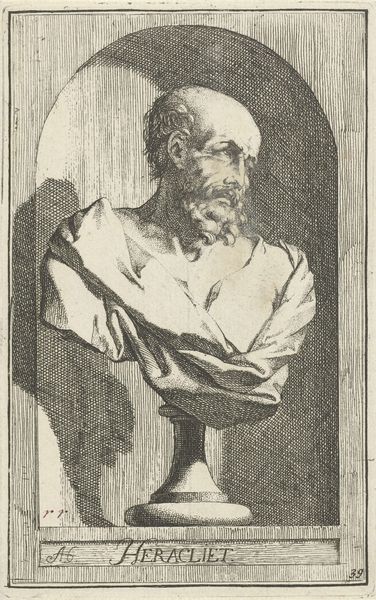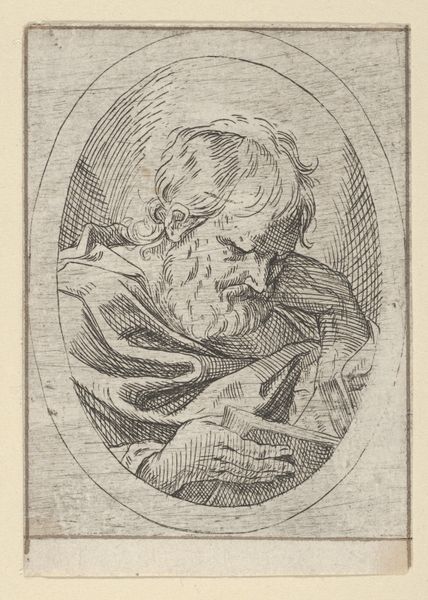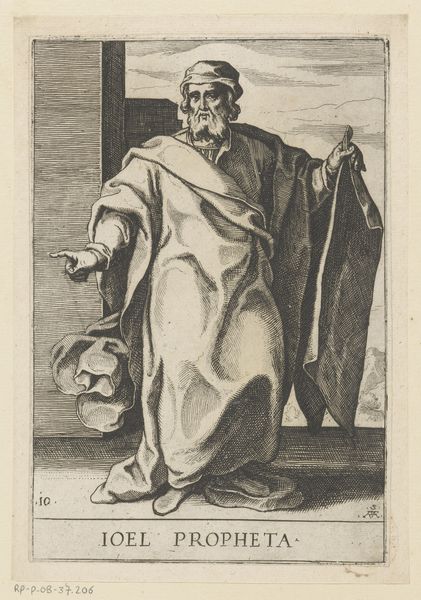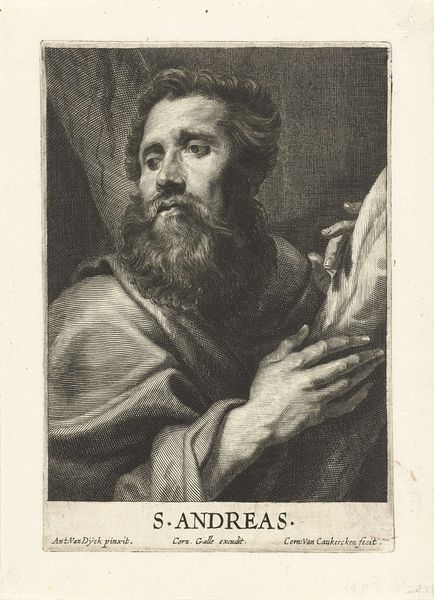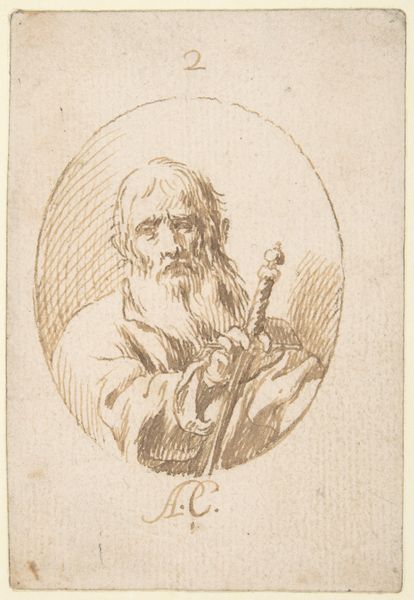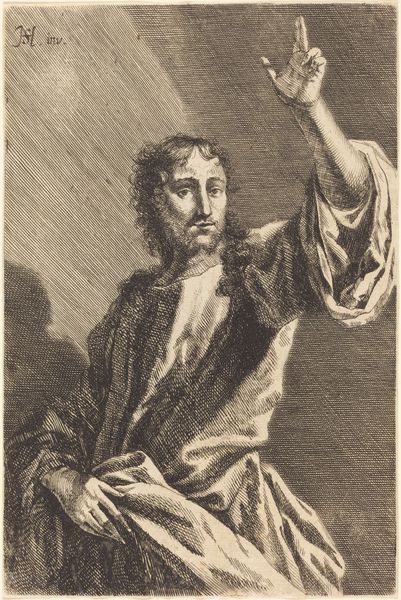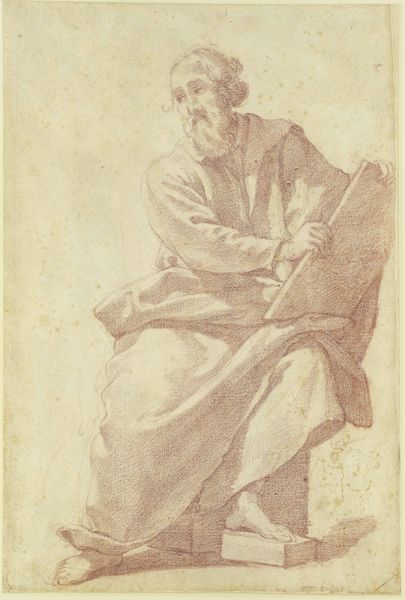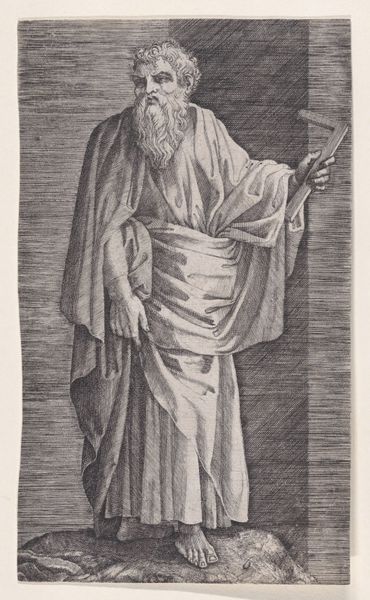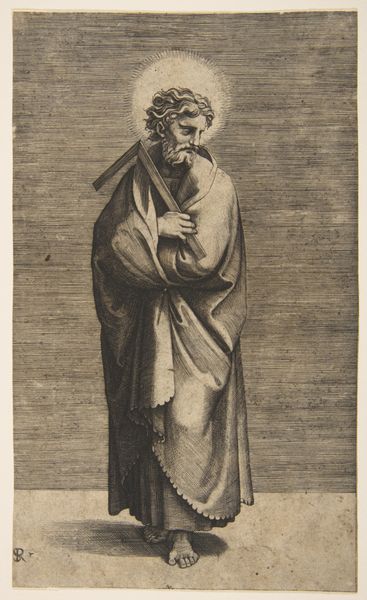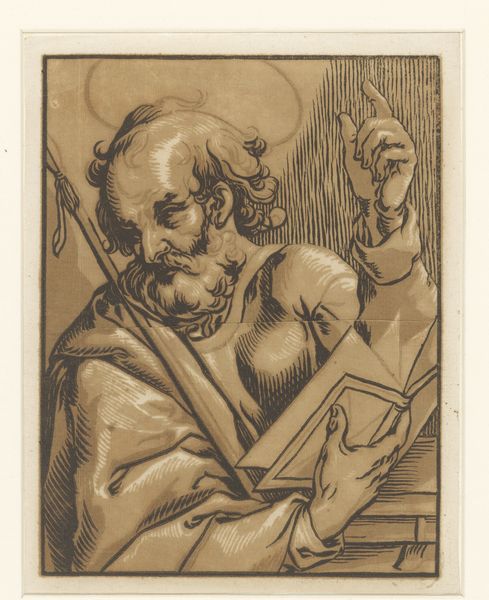
A man, possibly a scholar or philosopher, from a portfolio of reproductions of the Imperial Gallery of Paintings in Vienna; plate 64 of the series 1728
0:00
0:00
drawing, print, engraving
#
portrait
#
drawing
#
baroque
# print
#
pencil drawing
#
engraving
Dimensions: Sheet: 8 15/16 × 6 9/16 in. (22.7 × 16.6 cm)
Copyright: Public Domain
Editor: This is "A man, possibly a scholar or philosopher," a print from 1728 by Anton Joseph von Prenner. He seems so burdened. What story do you think this portrait tells? Curator: I see a layered narrative reflecting the social constraints of knowledge production in the 18th century. Consider how the ‘scholar’ or ‘philosopher’ archetype was often carefully constructed, emphasizing masculinity and often excluding diverse perspectives. The etching medium itself, with its painstaking process, mirrors the perceived rigor required of intellectual pursuits. Editor: So, it’s not just about portraying an individual, but a whole system? Curator: Exactly. And who gets to be represented within that system? Notice the figure’s downcast gaze and rumpled clothing. Is this conveying humility, or perhaps something more critical? Think about the power structures at play. Who gets remembered as a philosopher? Whose ideas are valued and why? Editor: I hadn’t considered the impact of excluding certain people from knowledge. Curator: And who does the artwork promote? Consider the artist Anton Joseph von Prenner, the institutions that held the prints, the societal structures of the Baroque era and what those prints reinforced, or excluded. Editor: That’s fascinating. It makes me think about how even portraits can be political statements about identity and power. Thank you for shedding light on those issues. Curator: It's a constant process of re-evaluation. Engaging with art this way allows us to uncover whose voices are amplified and whose are historically silenced.
Comments
No comments
Be the first to comment and join the conversation on the ultimate creative platform.
